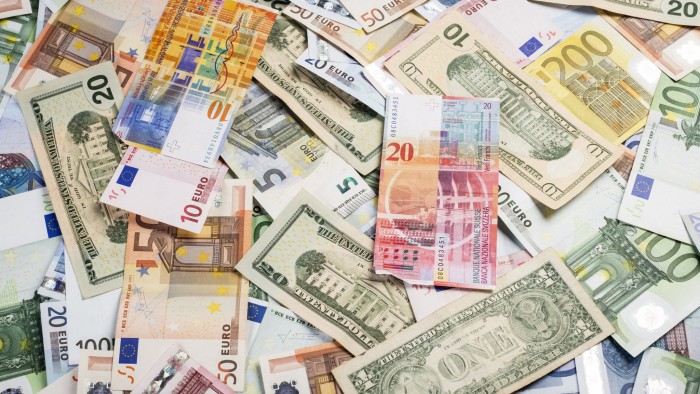Third-quarter EM pain for dollar earners

Simply sign up to the Currencies myFT Digest -- delivered directly to your inbox.
US companies with global operations focused on emerging market countries are bracing for weaker earnings courtesy of a stronger dollar as the quarterly results season unfolds over the coming weeks.
Investors soured on the S&P 500 during the third quarter, alarmed by signs of slowing global growth, led by China and other emerging market countries.
Now, as S&P 500 companies report results and outline their prospects for the rest of the year and early 2016, investors expect weakness from EM operations will be offset by the dollar trading relatively steadily against major developed currency partners during the third quarter.
In a sign of what beckons for US earnings, SABMiller this week revealed a big hit from the continuing weakness of emerging market currencies against the dollar. The London-based producer of Miller Lite, Grolsch and Peroni makes 70 per cent of its sales to emerging markets.
PepsiCo, the US snacks and beverage group, also saw roughly $2bn sliced off revenues in its just-completed quarter as currency swings cut into its sales abroad. Yum Brands, the owner of KFC and Taco Bell and Dupont, also warned this week of the dollar’s impact on earnings.
A strengthening dollar hurts US companies with large overseas operations since the same amount of money made outside the US is worth less when translated back into dollars.
A blended rate of reported results and estimates shows third-quarter revenue for companies in the S&P 500 with less than 50 per cent of sales in the US fell 13 per cent year over year compared with a rise of about 1 per cent for those with more than half of sales in the US, according to FactSet.
While the dollar index, which measures the greenback against a basket of its major peers such as the euro, sterling and Canadian dollar, rose only 0.8 per cent during the period, it significantly appreciated against emerging market currencies during the period.
JPMorgan’s emerging market currency index, which measures the most heavily traded EM currencies against the dollar, is down 8.25 per cent.
Indeed, investors said the impact of the dollar would be bifurcated.
“Broadly speaking, if you look at the S&P 500 the impact of currency in the third quarter will be significantly less than in the first half of the year, but the impact will be in companies that are doing a lot of business in Russia, China or Latin America,” said Oliver Pursche, chief executive at Bruderman Brothers.
The dollar will be less of a drag for US multinationals doing business in the western hemisphere as well as in Japan and Australia, he said.
James Liu, global market strategist with JPMorgan Asset Management, sees “a light at the end of the tunnel” for the dollar and earnings.
“The third quarter should be the last quarter we have these real negative year-on-year comparisons,” he said.
With the earnings season about to get under way, the Commerce Department this week reported that in August the gap between US exports and imports swelled more than 15 per cent to $48.3bn, highlighting how a strong dollar has affected the trade balance.
Comments